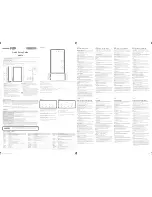
8
LInk.fIrewIre features
Front Panel
1. INPUT GAIN Control
These knobs adjust the gain of the analog input signal (before the
A/D converters). They adjust the signal for both the mic and line inputs.
Turn the knob fully counter-clockwise to turn the signal down, and fully
clockwise to get the maximum gain.
2. LINE/INSTR Switch
If you are using a microphone or line-level input, leave this switch out.
If you are connecting an instrument like a guitar directly to the Link.FireWire,
push this switch in. It adjusts the input impedance of the 1/4" input to
match the high-output impedance of a guitar pickup.
3. OL/SIG Indicator
This LED illuminates green when there is a signal present (after the
GAIN control). If the signal gets too loud and is in danger of distorting
(clipping), the LED flashes red. If you see the OL/SIG LED flashing red,
turn down the signal either at its source or by using the INPUT GAIN [1]
control on the Link.FireWire.
4. 48V Switch
Push this button in if you are using a microphone that requires 48 VDC
phantom power. This applies phantom power to pins 2 and 3 of both XLR
inputs. It has no effect on the 1/4" inputs.
Note:
There are just a few microphones (mostly ribbon mics) that can
be damaged by phantom power. Consult your microphone’s owner’s
manual to see if it needs phantom power or not. If it does, always turn
off the phantom power switch before connecting or disconnecting your
microphone.
POWER
2
1
2
8
1
7
5
9
4
3
6
1
3
2









































